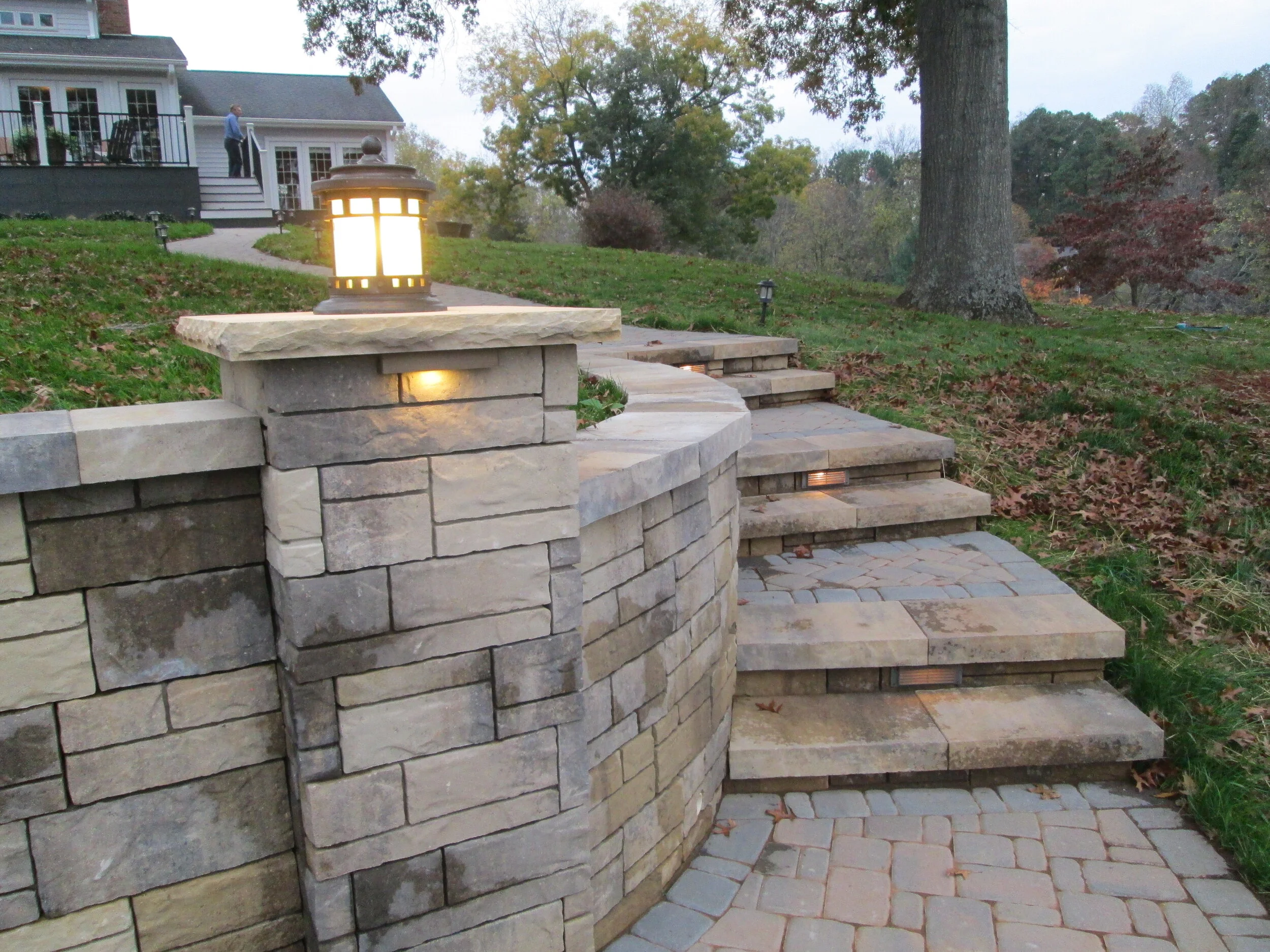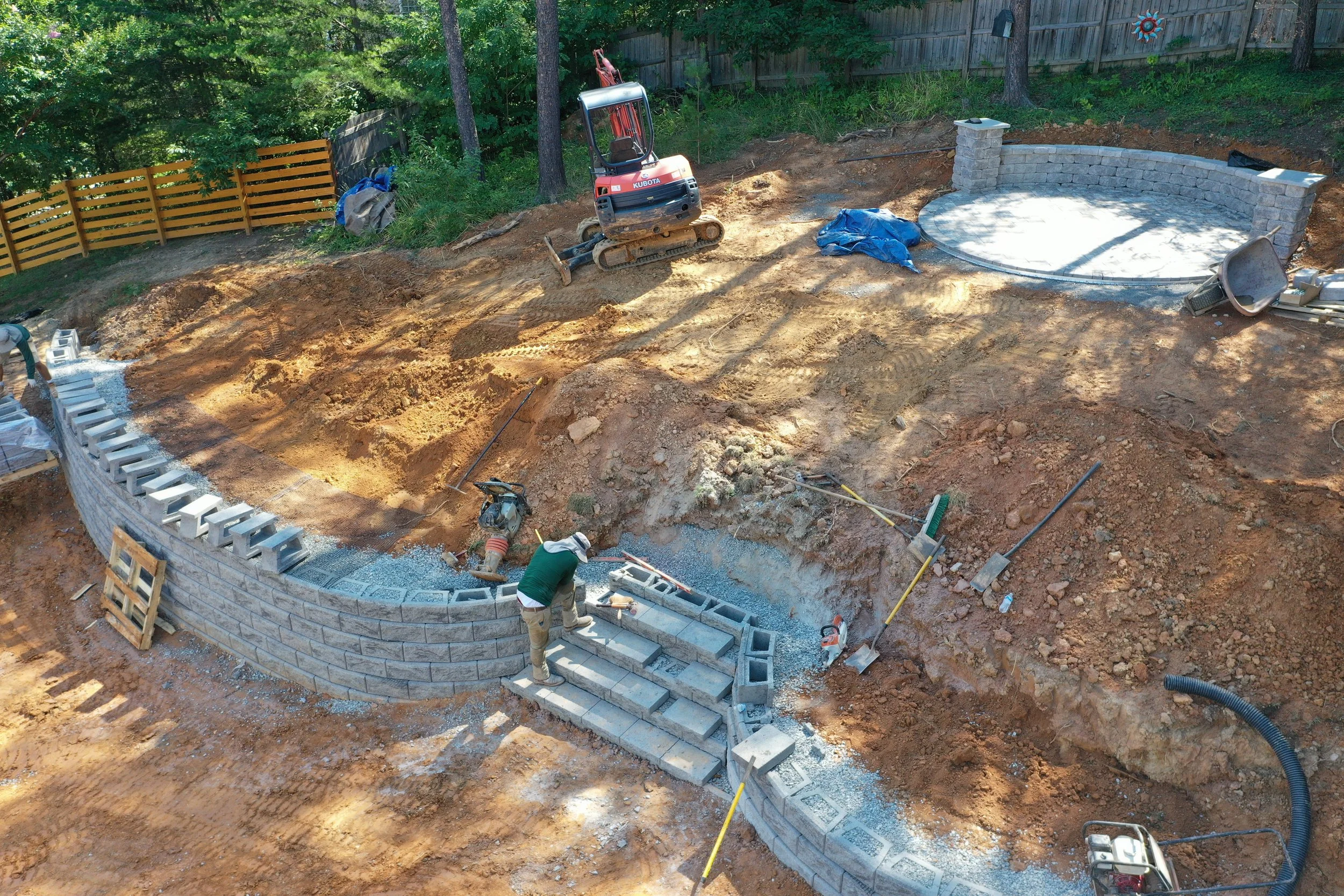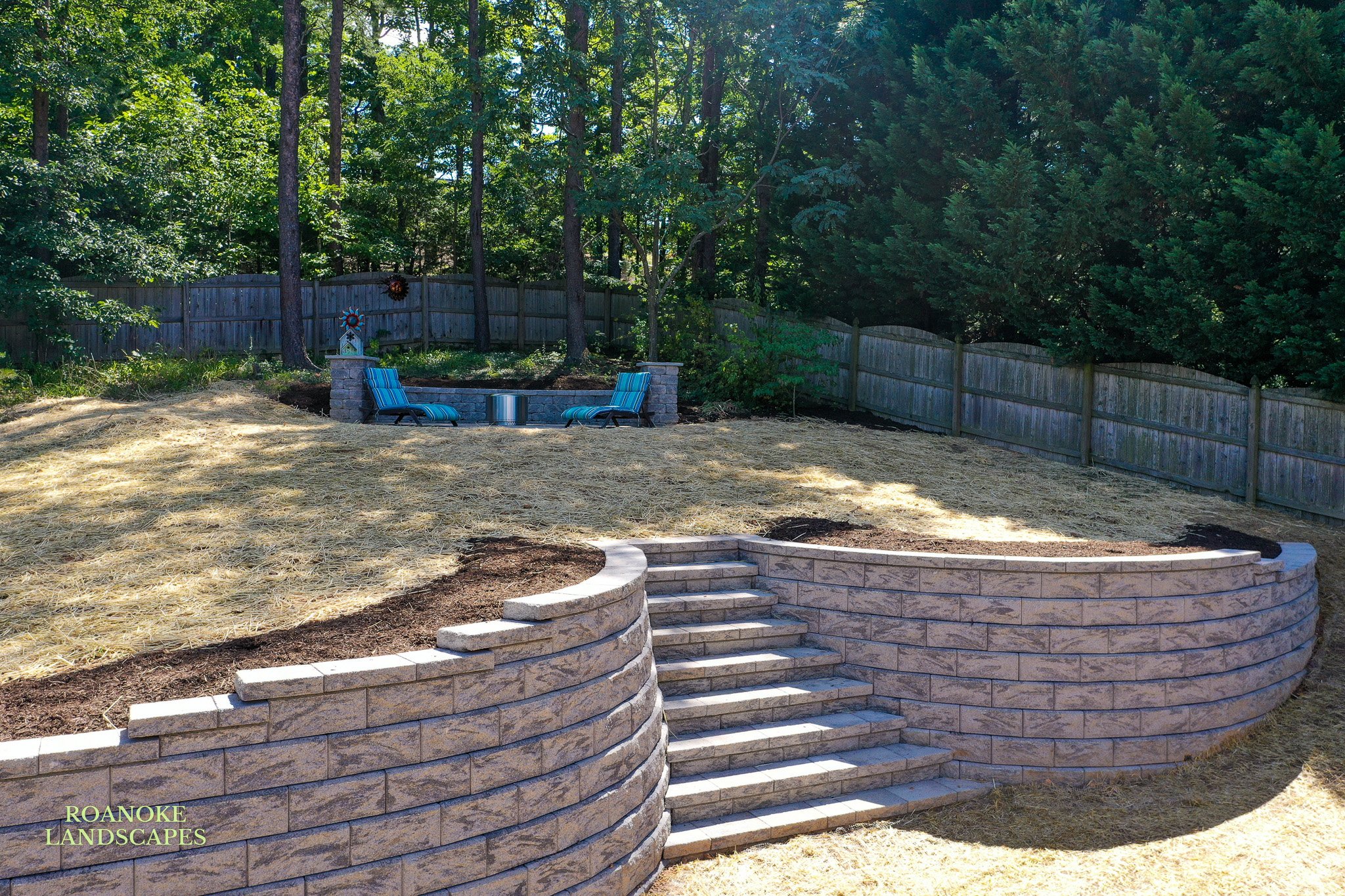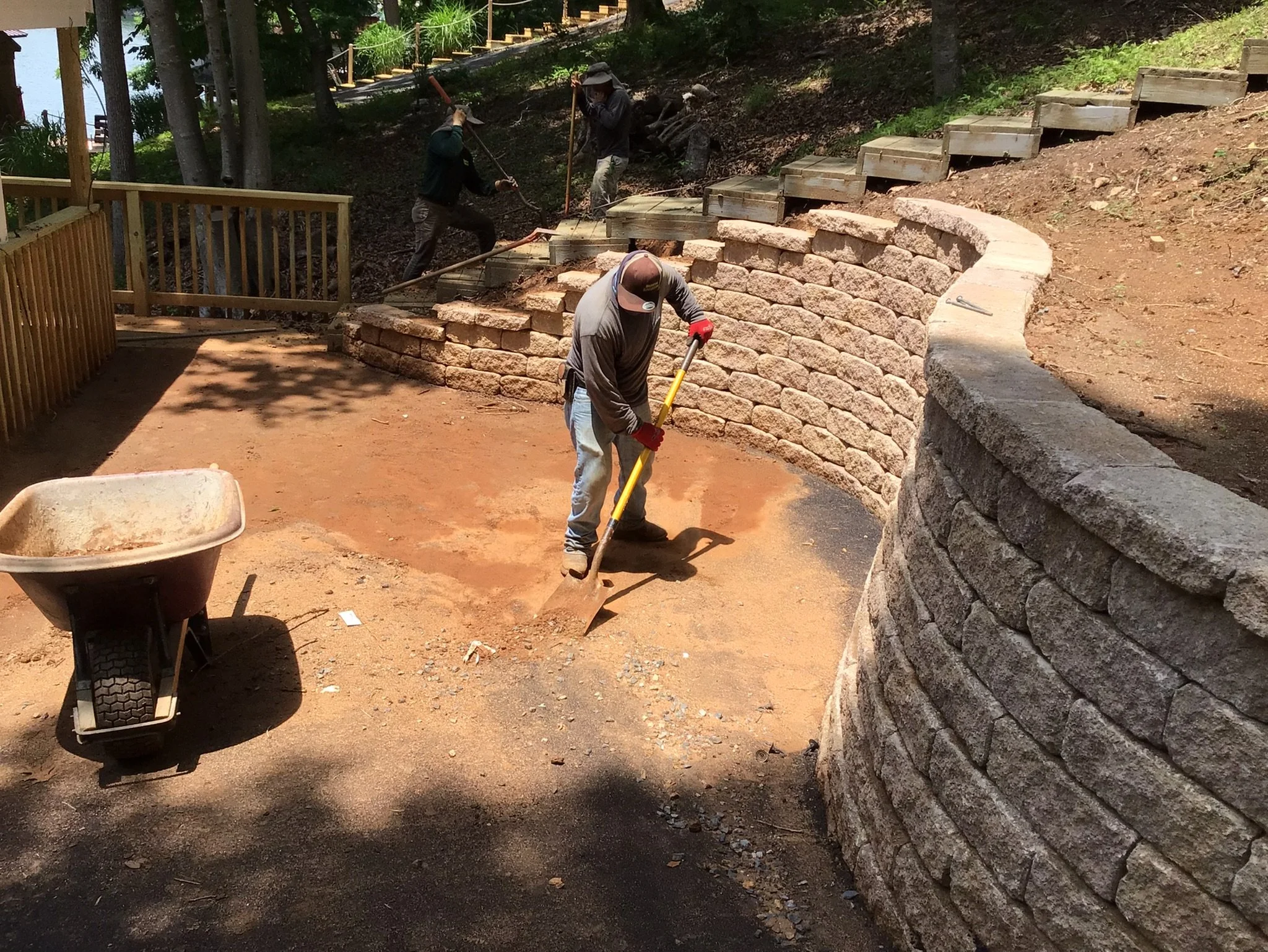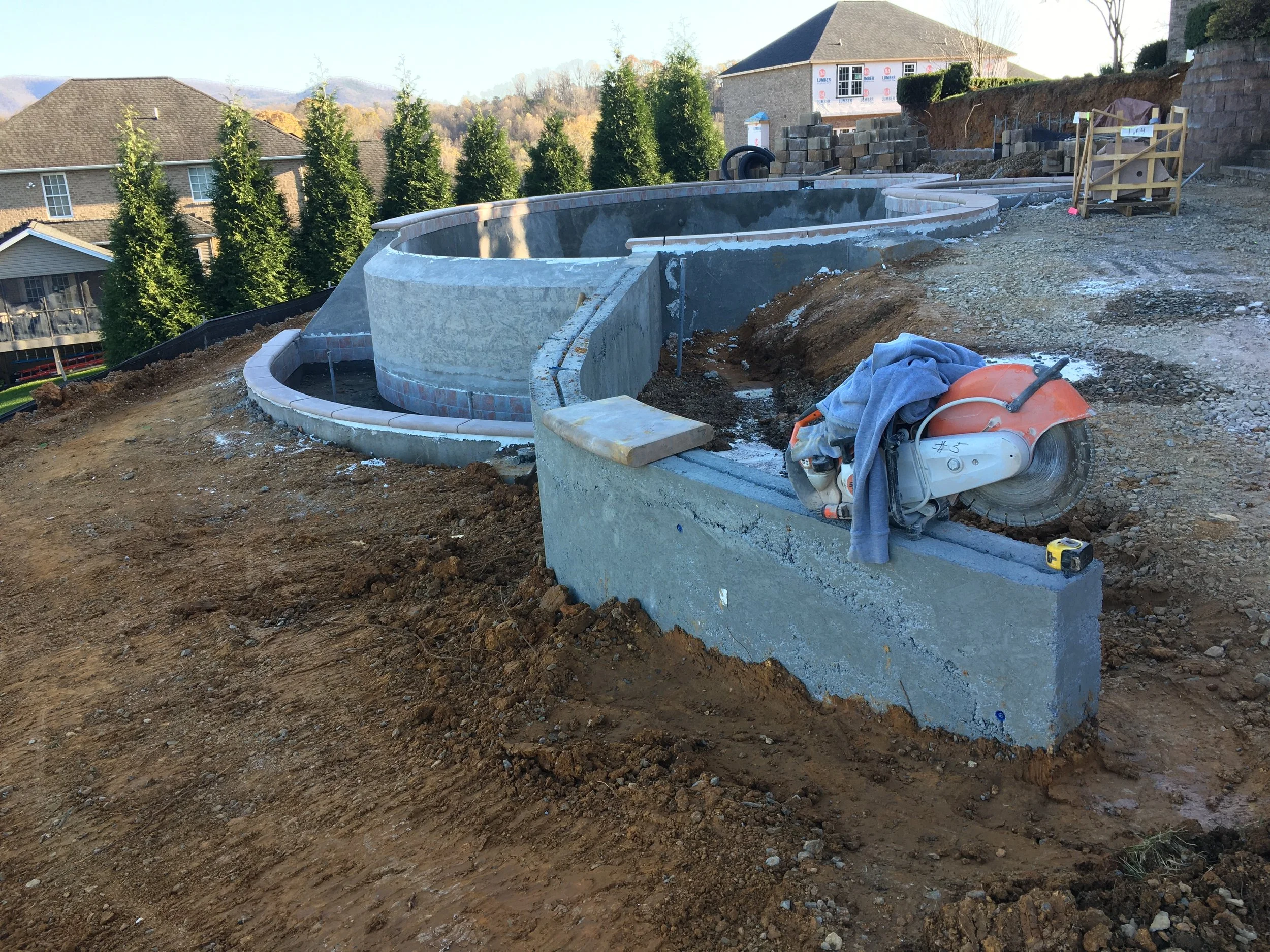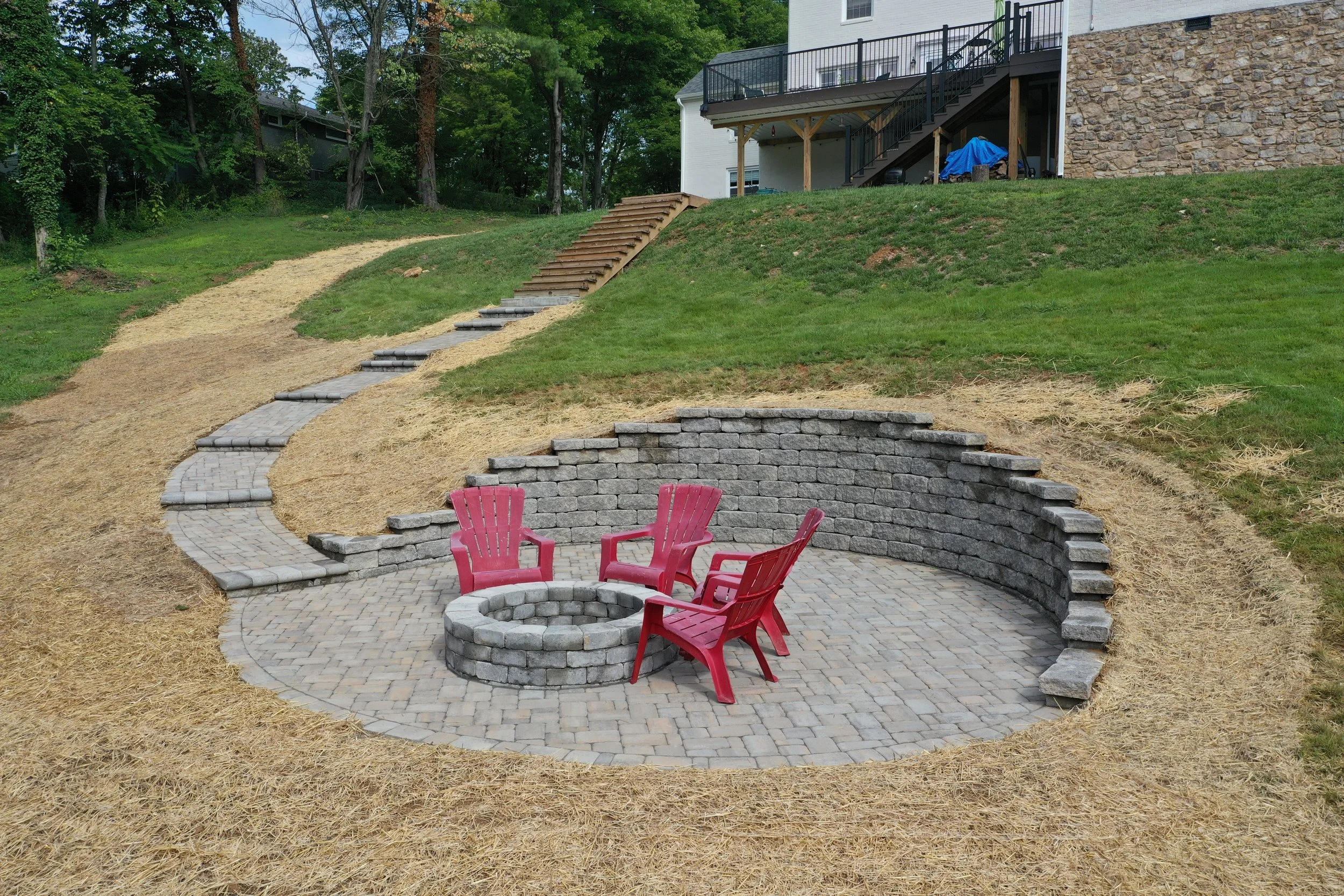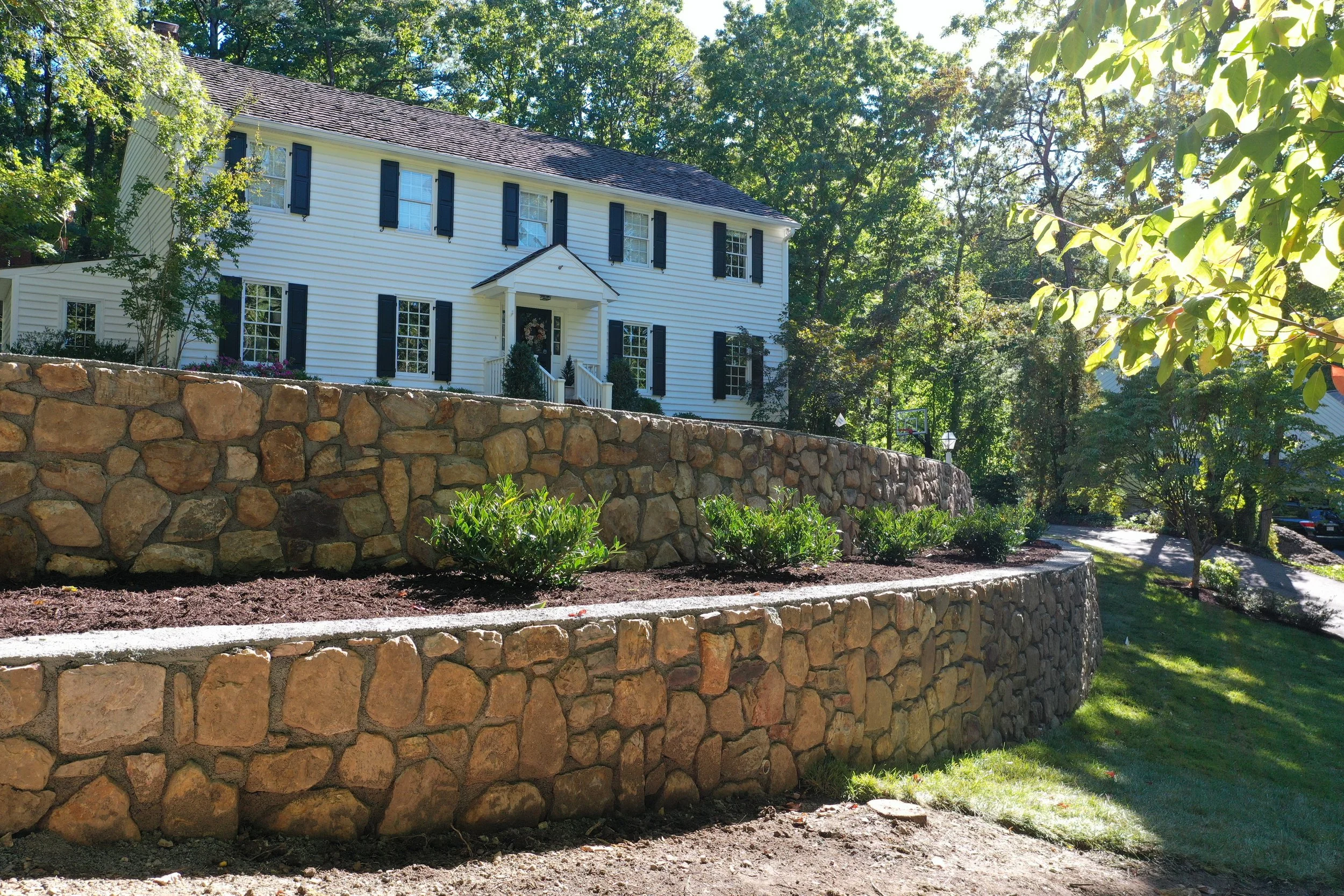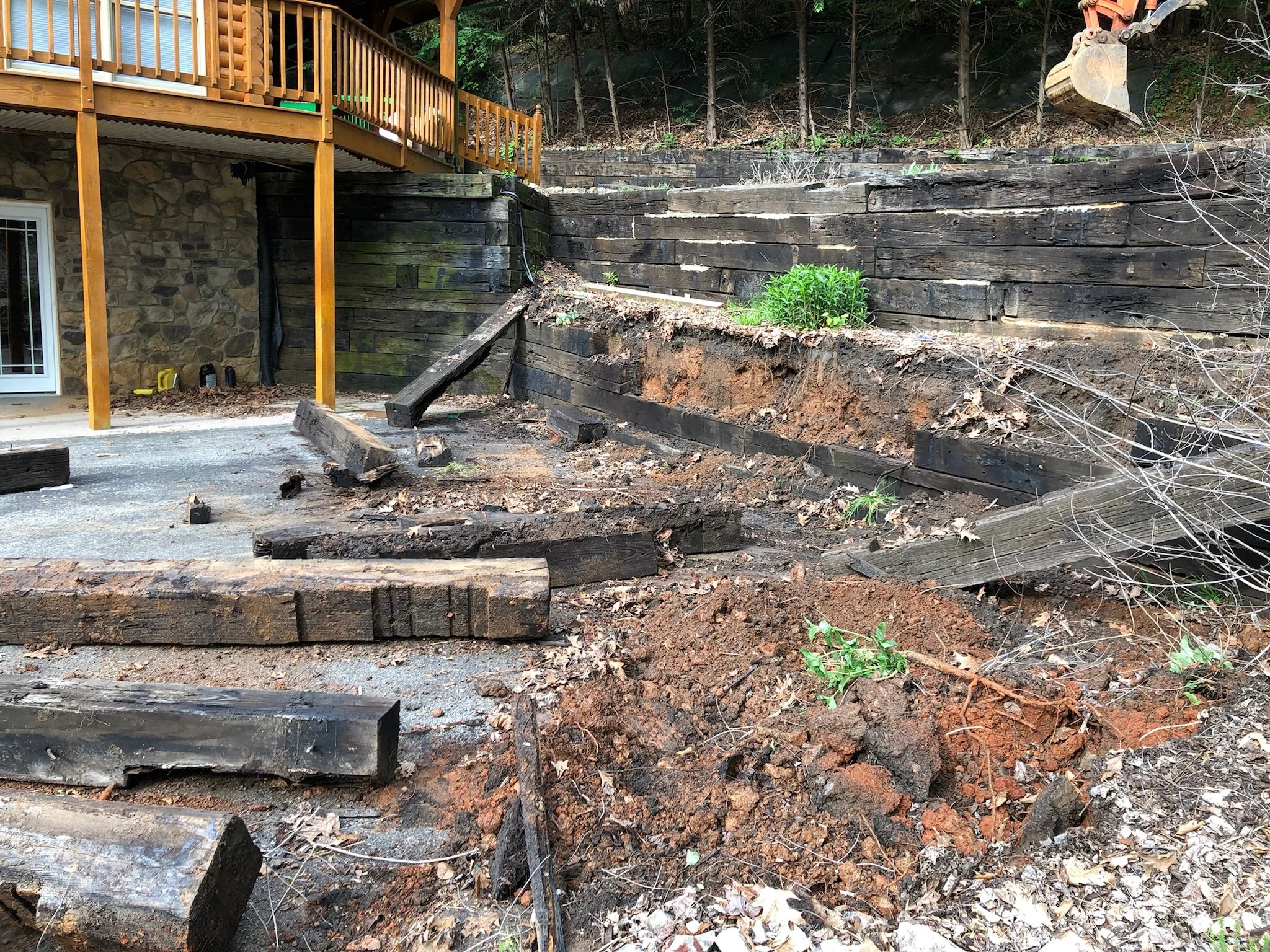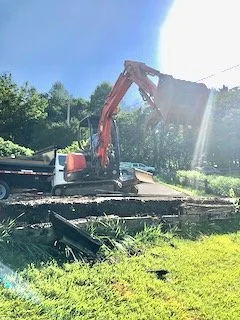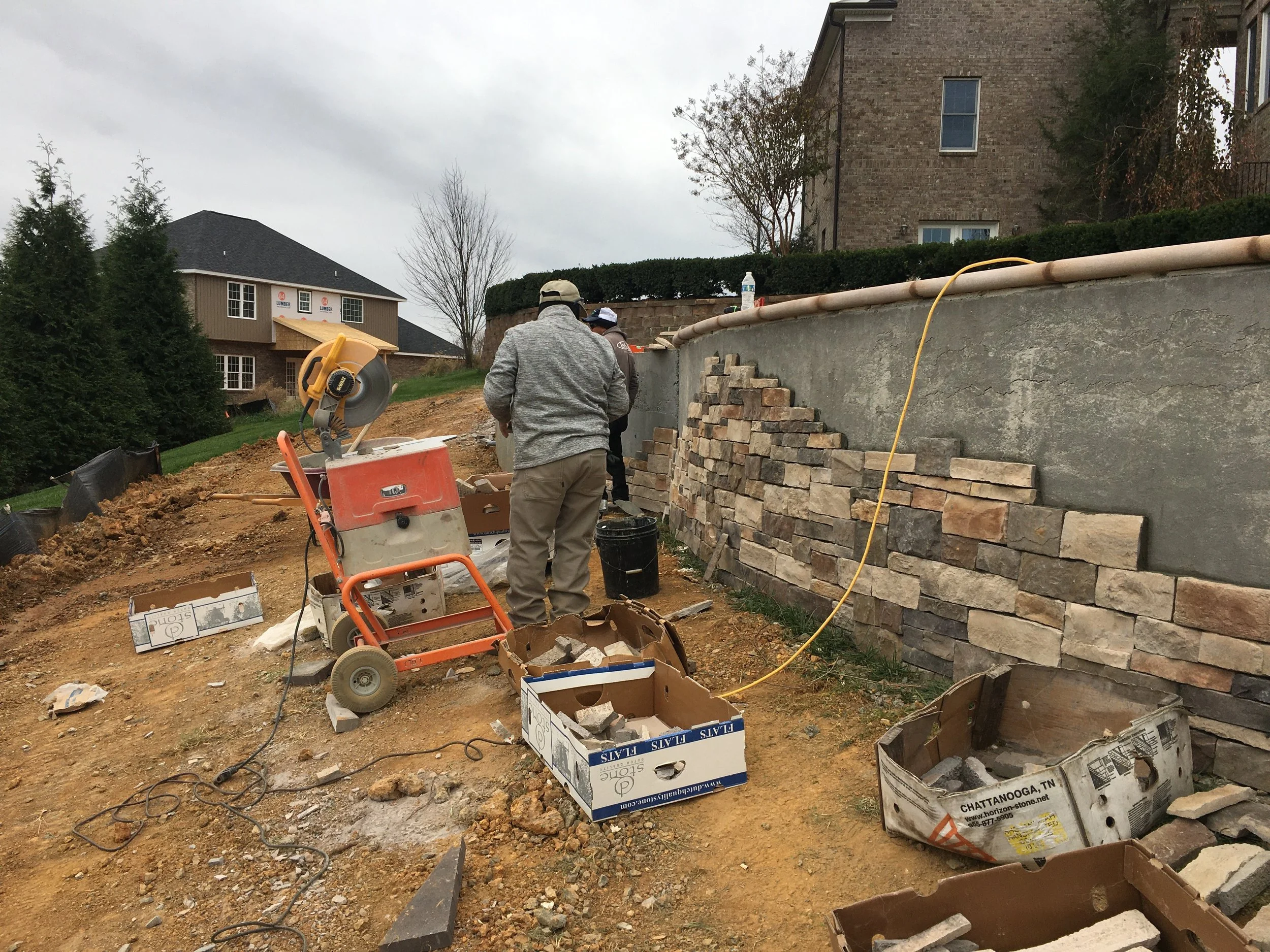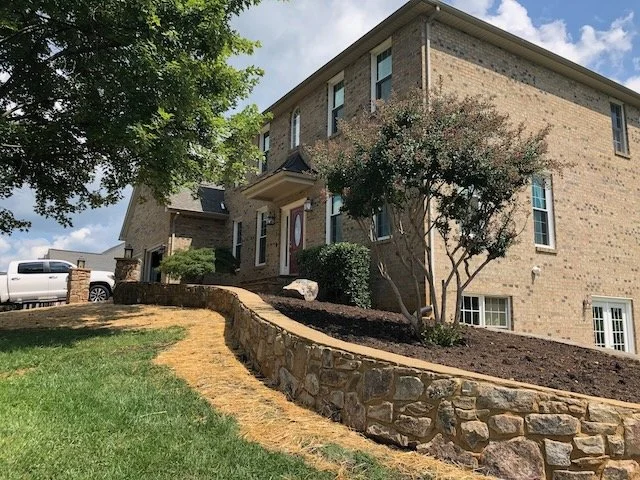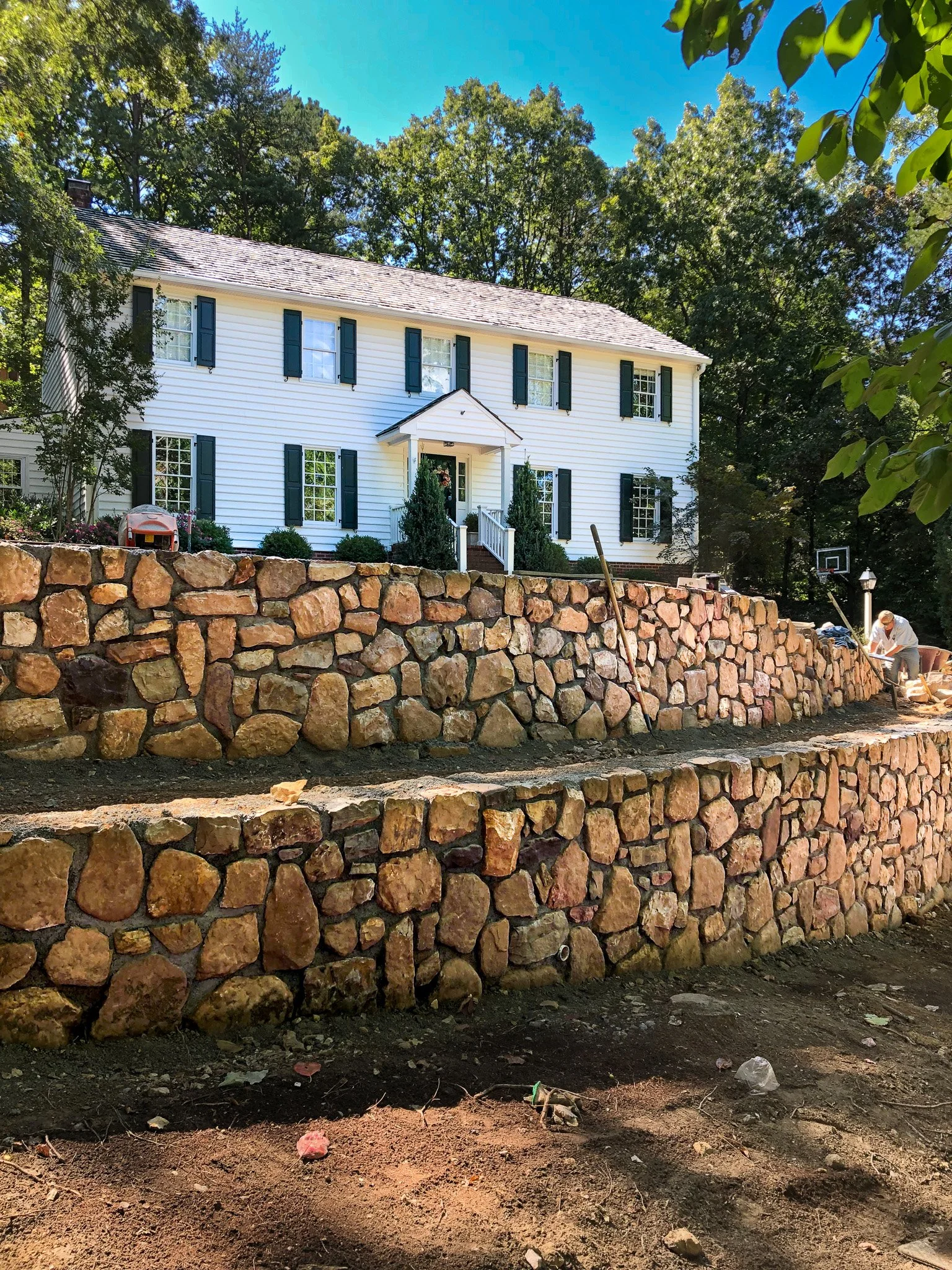Retaining Walls
Here in Southwest Virginia, we are blessed with an abundance of rolling hills and mountains which create terrific beauty, interest, and mystique. However, erosion and runoff issues may be caused or exacerbated by hilly, rugged landscapes. Retaining walls are one method of supporting soil and eliminating erosion problems. They will also add value and curb appeal to your property.
In the last thirty years, the industry has excelled at developing these segmental retaining wall blocks, creating standards for material, design, and construction practices. Segmental retaining wall blocks are manufactured from concrete and come in a variety of shapes, sizes, locking mechanisms, and colors.
In today’s retaining wall market, a new material dominates: man-made segmental retaining wall blocks.
Companies that offer wall construction have a multitude of choices when deciding what kind of retaining wall is the best fit for a client. In some situations, any kind of retaining wall will work. However, the preferences of property owners and the unique characteristics of a landscape can dictate which materials are optimal. At times, size requirements and local government restrictions tend to make natural stone and poured concrete walls less accessible due to the cost and difficulty of construction. Segmental block walls are perhaps the most flexible type of retaining wall in that they can be adapted to fit a variety of situations and locations that other walls may have difficulty conforming to.
Your Retaining Wall Choices:
Decades ago, retaining walls were primarily made from four materials: wood, poured concrete, concrete block, and natural stone.
Wood wall material is typically salvaged from railroad cross ties or treated lumber. Though wood is functional and plentiful, the effect of wood anti-rot treatments raise environmental concerns and the longevity of wood walls is short compared to other types.
Unlike wood walls, poured concrete walls lack an inherent aesthetic appeal, though this can be improved with the addition of veneers. The lateral strength of the poured concrete walls is critically dependent upon proper construction, so the effectiveness of these walls can be illusionary.
Cinder-block or concrete block walls also lack an inherent aesthetic appeal but beautifying them with veneers is always an option. However, the lateral strength of cinder block is not reliable and so most cinder block walls fail over time.
Natural stone walls are very attractive and sturdy if constructed properly. The craftsmanship a stone wall requires makes them more expensive than most other retaining walls.


